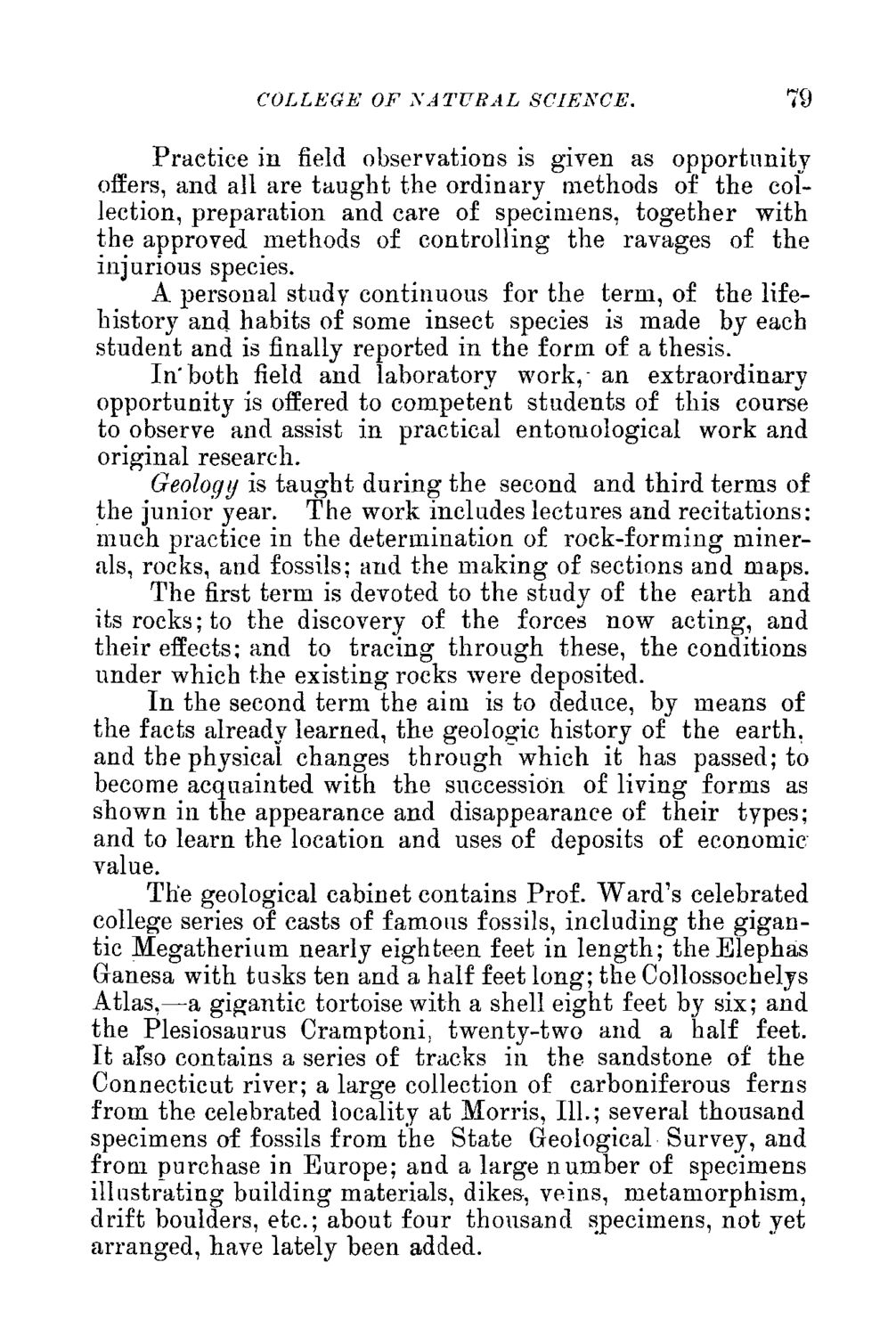| |
| |
Caption: Course Catalog - 1888-1889
This is a reduced-resolution page image for fast online browsing.

EXTRACTED TEXT FROM PAGE:
COLLEGE OF NATURAL SCIENCE. 79 Practice in field observations is given as opportunity offers, and all are taught the ordinary methods of the collection, preparation and care of specimens, together with the approved methods of controlling the ravages of the injurious species. A personal study continuous for the term, of the lifehistory and habits of some insect species is made by each student and is finally reported in the form of a thesis. In'both field and laboratory work, an extraordinary opportunity is offered to competent students of this course to observe and assist in practical entomological work and original research. Geology is taught during the second and third terms of the junior year. The work includes lectures and recitations: much practice in the determination of rock-forming minerals, rocks, and fossils; and the making of sections and maps. The first term is devoted to the study of the earth and its rocks; to the discovery of the forces now acting, and their effects; and to tracing through these, the conditions under which the existing rocks were deposited. In the second term the aim is to deduce, by means of the facts already learned, the geologic history of the earth, and the physical changes through which it has passed; to become acquainted with the succession of living forms as shown in the appearance and disappearance of their types; and to learn the location and uses of deposits of economic value. The geological cabinet contains Prof. Ward's celebrated college series of casts of famous fossils, including the gigantic Megatherium nearly eighteen feet in length; theElephas Granesa with tusks ten and a half feet long; the Collossochelys Atlas,—a gigantic tortoise with a shell eight feet by six; and the Plesiosaurus Cramptoni, twenty-two and a half feet. It also contains a series of tracks in the sandstone of the Connecticut river; a large collection of carboniferous ferns from the celebrated locality at Morris, 111.; several thousand specimens of fossils from the State Geological Survey, and from purchase in Europe; and a large number of specimens illustrating building materials, dikes, veins, metamorphism, drift boulders, etc.; about four thousand specimens, not yet arranged, have lately been added.
| |